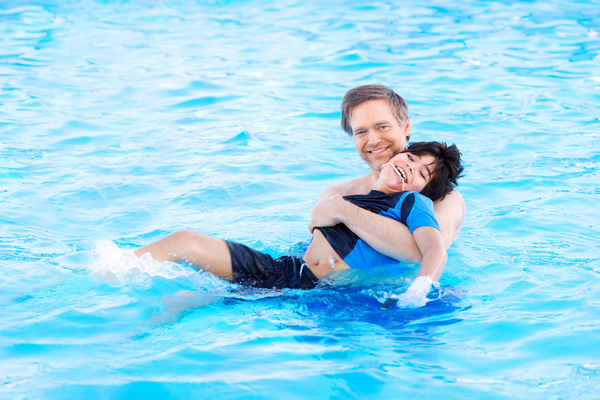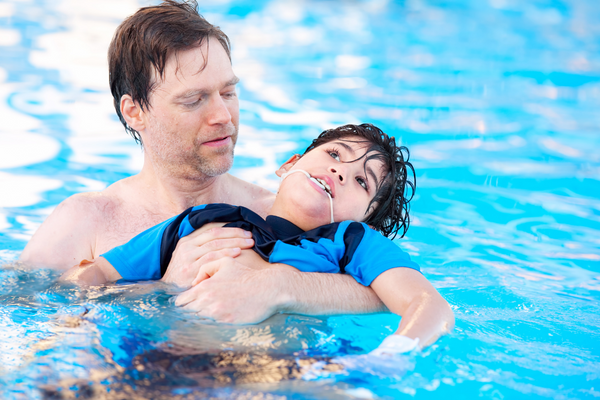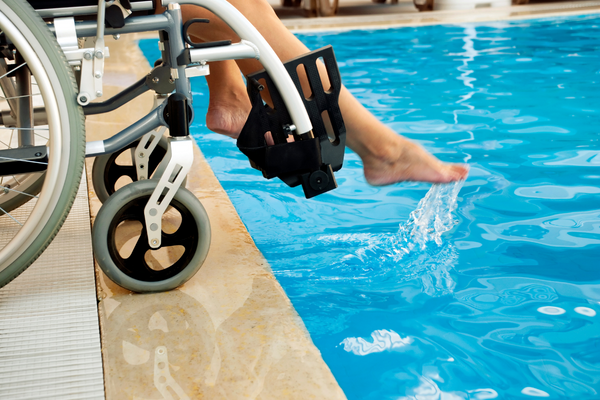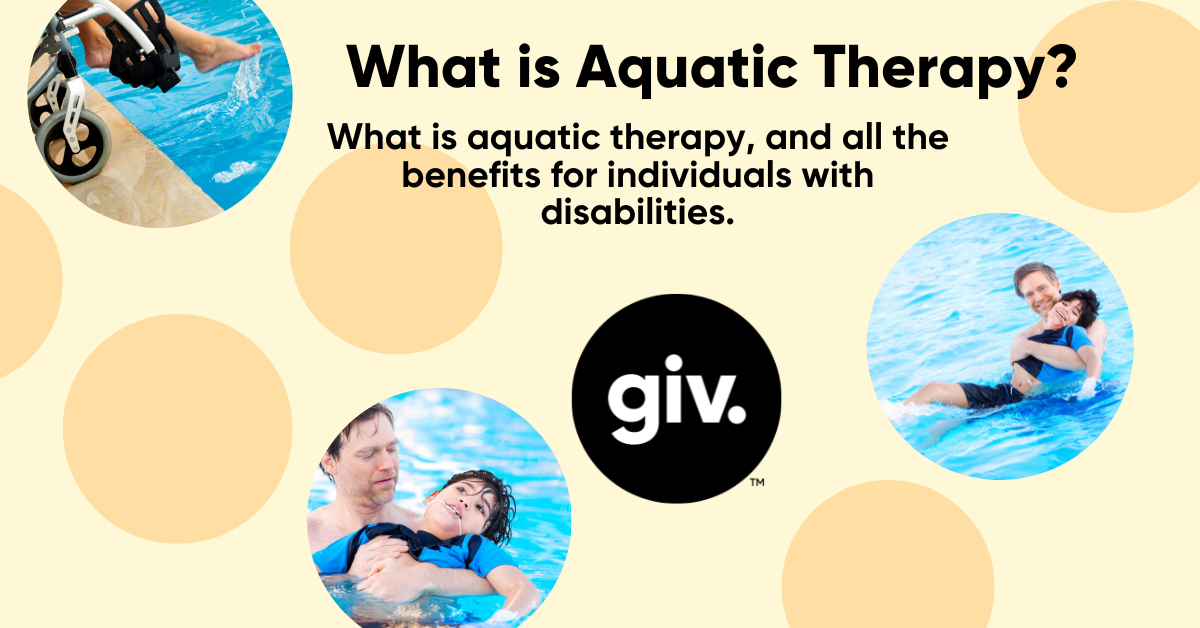Amid the ever-evolving landscape of physical therapy, the term “aquatic therapy” has gained significant traction. As a beacon of hope and healing, it has become a cornerstone in the repertoire of rehabilitation techniques. Delving into the aquatic realm offers a unique perspective on wellness, providing a sanctuary for those seeking relief from various physical challenges. In this exploration, we unravel the mysteries behind aquatic therapy, examining its nuances and the profound impact it has on individuals seeking rehabilitation.
What is Aquatic Therapy
Aquatic therapy, often referred to as aquatic physical therapy, is a specialized form of physical therapy conducted in a water environment. This therapeutic approach harnesses the physical properties of water to facilitate rehabilitation and improve overall health. By combining buoyancy, hydrostatic pressure, and the unique resistance water provides, aquatic therapy proves to be a dynamic and effective means of promoting recovery.
Understanding Aquatic Physical Therapy
Aquatic physical therapy is an extension of traditional physical therapy, incorporating the benefits of water into rehabilitation programs. Licensed physical therapists or physical therapist assistants guide individuals through exercises performed in warm water, leveraging the pool’s supportive environment to target specific areas of concern. This approach is particularly beneficial for those with chronic pain, joint damage, or muscle weakness.
The Role of Physical Therapists in Aquatic Therapy Sessions
In aquatic therapy sessions, skilled physical therapists play a pivotal role in designing and implementing personalized programs. These professionals leverage their expertise to create a tailored physical therapy plan that addresses the unique needs and challenges of each individual. By blending aquatic exercise with land-based exercises, physical therapists ensure a comprehensive and holistic approach to rehabilitation.
Hydrostatic Pressure: A Fundamental Element
A key aspect of aquatic therapy is hydrostatic pressure, the force exerted by water on the immersed body. This pressure aids in reducing swelling and inflammation, promoting blood flow, and enhancing joint stability. The controlled pressure exerted by water allows for a gentle yet effective therapeutic environment, making aquatic therapy an ideal choice for those with arthritis, joint stiffness, or rheumatoid arthritis.
Buoyancy: Easing the Burden on Injured Areas
Buoyancy, another intrinsic property of water, counteracts the effects of gravity and reduces the impact on weight-bearing joints. This is particularly advantageous for individuals with injuries or conditions affecting the lower extremities. The buoyancy provided by the water lessens the load on injured areas, allowing for exercise and movement with less resistance and pain.

Warm Water: A Soothing Medium for Rehabilitation
The use of warm water in aquatic therapy is not merely a comfort; it serves a therapeutic purpose. The warmth enhances muscle relaxation, increases blood flow, and contributes to pain relief. As the body’s tissues warm up, the aquatic environment becomes conducive to performing exercises that might be challenging on dry land, making it an ideal setting for rehabilitation.
Aquatic Rehabilitation for Chronic Pain Management
Aquatic therapy has emerged as a valuable tool in managing chronic pain. The buoyancy of the water reduces the impact on joints, while the warmth promotes muscle relaxation, ultimately contributing to pain reduction. Under the guidance of a licensed physical therapist, individuals can perform aquatic exercises tailored to their specific needs, addressing the root causes of chronic pain.
Aquatic Exercise Programs: Tailoring to Individual Needs
The versatility of aquatic therapy allows for the creation of personalized exercise programs. These programs focus on muscle strengthening, improving aerobic capacity, and enhancing overall physical fitness. Whether addressing conditions like knee osteoarthritis or designing a group setting for joint flexibility, aquatic exercise programs can be adapted to meet the diverse needs of individuals in rehabilitation.
Underwater Treadmill: Revolutionizing Gait Training
One of the innovative tools in aquatic therapy is the underwater treadmill. This apparatus facilitates gait training in a low-impact environment, making it an invaluable resource for individuals with joint damage or mobility issues. The buoyancy and reduced resistance of water create an ideal setting for improving gait and enhancing mobility.
Cold Therapy in Aquatic Environments
The aquatic environment isn’t limited to warm water; cold therapy in pools is also gaining recognition. Cold water immersion can reduce inflammation, alleviate sore muscles, and enhance recovery. Aquatic therapy programs that incorporate cold therapy provide a versatile approach to addressing a range of conditions, from acute injuries to chronic pain management.

The Bad Ragaz Ring Method in Aquatic Rehabilitation
Named after the town in Switzerland where it originated, the Bad Ragaz Ring Method is a specific technique employed in aquatic rehabilitation. This method involves carefully designed exercises in the water to improve muscle strength, joint flexibility, and overall functional movement. Incorporating the Bad Ragaz Ring Method into aquatic therapy sessions adds a layer of precision and effectiveness to rehabilitation programs.
Improving Balance and Circulation through Aquatic Therapy
Aquatic therapy’s influence extends beyond addressing specific conditions; it actively contributes to improving balance and circulation. The supportive water environment allows individuals to perform exercises that challenge balance without the fear of falling. Additionally, the increased blood flow resulting from aquatic exercise contributes to overall circulatory health.

Safe Environment for Rehabilitation
The aquatic environment, with its controlled conditions and reduced impact, provides a safe space for rehabilitation. For individuals with disabilities or injuries, the pool area becomes a sanctuary where they can focus on recovery without the fear of exacerbating their conditions. The presence of features like chair lifts further ensures accessibility for all.
More Effort, Less Resistance in Aquatic Therapy
Contrary to expectations, the buoyancy of water doesn’t equate to a lack of resistance. Aquatic therapy cleverly leverages water’s resistance to create an environment where more effort is required to perform exercises effectively. This dual nature of buoyancy and resistance contributes to a comprehensive workout that challenges muscles and enhances overall fitness.
Expanding Surface Area for Enhanced Rehabilitation
Compared to land-based exercises, aquatic therapy offers an expanded surface area for movement. This expanded surface area allows for a wider range of motion, facilitating exercises that might be impractical or challenging on dry land. The versatility of the water environment enables physical therapists to design exercise programs that address the unique needs of each patient.
Aquatic Therapy – Unlocking All the Benefits
In conclusion, aquatic therapy stands as a multifaceted approach to rehabilitation that unlocks a myriad of benefits. From reducing the burden on injured areas and improving muscle strength to managing chronic pain and enhancing overall well-being, this unique form of physical therapy has proven its efficacy. For individuals with intellectual and developmental disabilities in the state of Utah, incorporating aquatic therapy into their care plans can usher in a new era of holistic and transformative rehabilitation.
Aquatic Therapy Locations in Utah:
- Wasatch Peak Physical Therapy
- Mountain Land Physical Therapy
- Sunshine Terrace
- Rock Run Physical Therapy
- Dynamic Physical Therapy
- Magna Physical Therapy
- Beyond Limits Physical Therapy
- NeuroWorx
In the vast expanse of disability caregiving, giv.care recognizes the potential of aquatic therapy as a cornerstone in providing comprehensive and effective care. By understanding and embracing the power of water, individuals with disabilities can embark on a journey of healing and empowerment, guided by the expertise of dedicated physical therapists.






